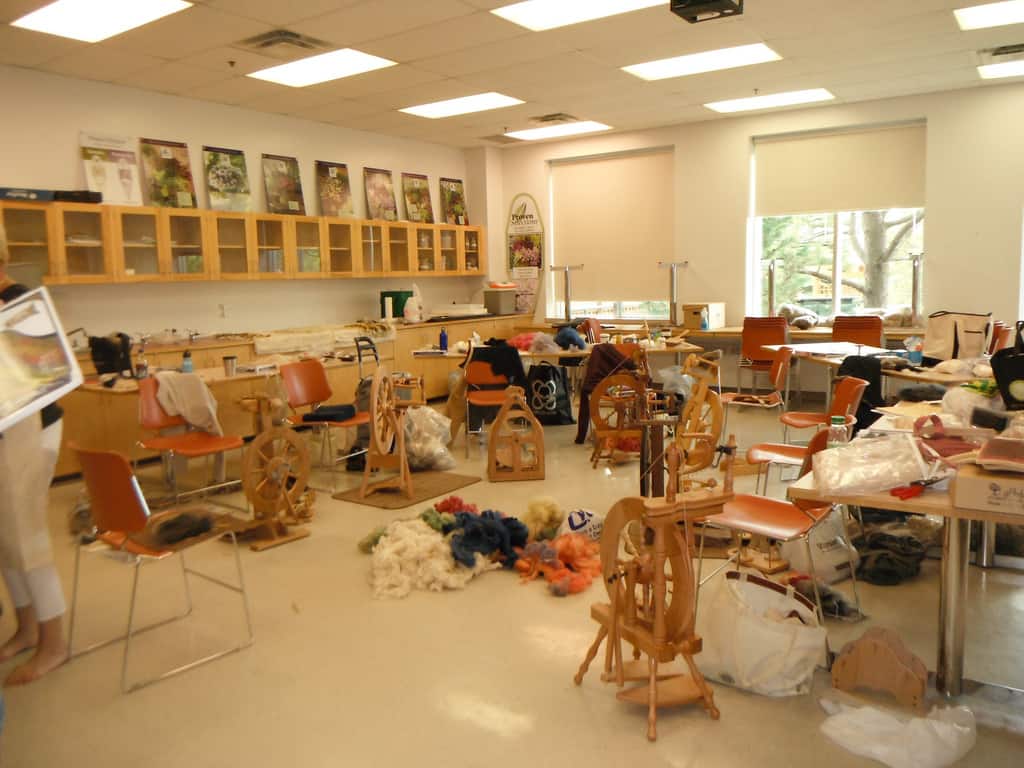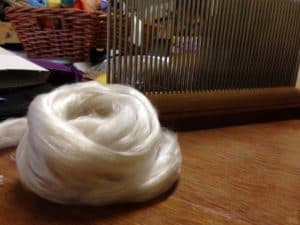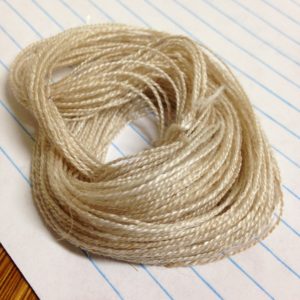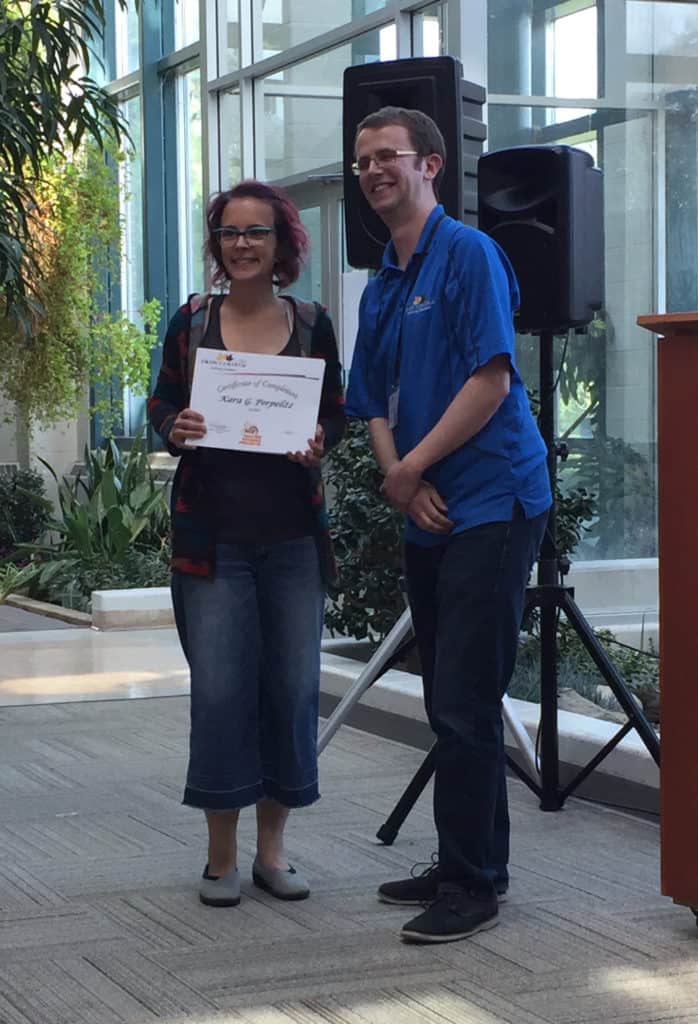Written by: Kara Perpelitz, fibre artist and SCC juried Professional Craftsperson

My very first spin
It all began with a picture on the internet.
What followed was a fast and comfortable slide into a fibre-y rabbit hole.
I purchased a drop spindle and about 4 ounces of what I can only guess was merino wool (it sure feels like merino!). Then, I had a random conversation at the Co-op that lead to over-sharing (as my need to over-share on topics I’m incredibly excited about is all but impossible to resist) and that conversation lead to the discovery of a spinning wheel near my house, which I promptly bought with all my spending money. More over-sharing lead to a trade of 7 pounds of Romney wool for 3 pedicures. All this happened within a month. Further internet sleuthing and I discovered a treasure trove of different wools and fibres, and promptly bought as many as I could afford. I was hooked. It was love at first spin.
Fast forward 2 years, on a half whim/half strong desire I registered for the Master Spinners programme offered by Olds College in Olds, Alberta, Canada. Level one was probably the most inspiring class I’ve taken in my whole life. Who knew wool came in many forms, and that there was a wool for every purpose? Who knew where Silk came from? Who knew how to truly clean wool straight off the sheep? They did, those Master Spinners. And nevermind the knowledge gained, the people were all so welcoming and so very wonderful.

I went home manual in hand, ready to tackle the homework. And tackle I did… Sort of. As best as a mother of 3 with pets and a plumbing business to co-run could, I tackled. I learned thrice as much (or more!) through out that homework than I had in the week in Olds. And headed back for level 2 the following year.
From there is was pretty much lather rinse and repeat for 6 years; being fully inspired every level, learning and learning more about wool, and silk, and cashmere, and llamas, and angora, and mohair, and cotton, and linen, and hemp, and soy, and corn, and seacell, and so many different fibres. And learning how to spin a very specific yarn, and how to reproduce an existing yarn, and what wheels work for what, and how to prepare my fibre to make the best yarn from it…

Camel silk blend

Camel silk blend yarn
The culmination of all this learning is what the college calls an In Depth Study, which for all intents and purposes, is a thesis style self directed paper, with physical samples, research and a little blood, sweat and tears for good measure. OK, so the last three are not actual requirements, but most Master Spinners may agree that there is a varying degree of them in every single binder we ever make.
My In Depth Study was on Ply Structure Influence on Fibre Characteristics and Suitable End Use. In which I took 5 wool fibres, spun them in 5 different wool structures, and knit and crocheted each in different stitch types (three knit, two crochet). It was enlightening to say the least, and I feel much more confident in giving advice to those looking to have wool spun, or who are wanting to spin for a certain project. While it was an intense topic to tackle, I’m glad I did.

I officially graduated and received the title Master Spinner in June this year (2017). Many people ask me, “what comes next?” To that I respond, “Teaching, writing, experimenting, and spinning many yarns, just for fun!” The options are quite limitless, though. Becoming a professional spinner, a Master Spinner, in a time where faster and cheaper is better, disposable or short use is easier, is sometimes frustrating. However, carrying on a tradition that is responsible for our continued existence (think, without that first twisted piece of fluff we wouldn’t have sweaters! Or fishing nets! Or cozy slippers and toques!) is incredibly rewarding, and I look forward to passing on tradition for years to come.
